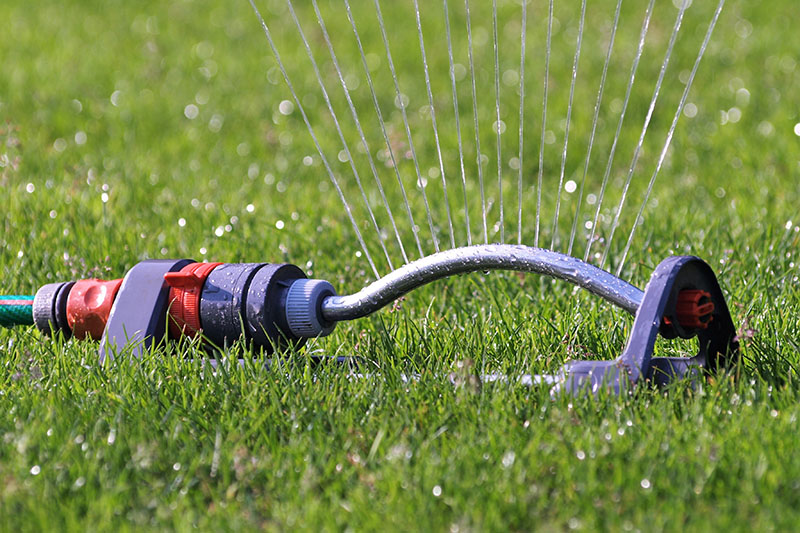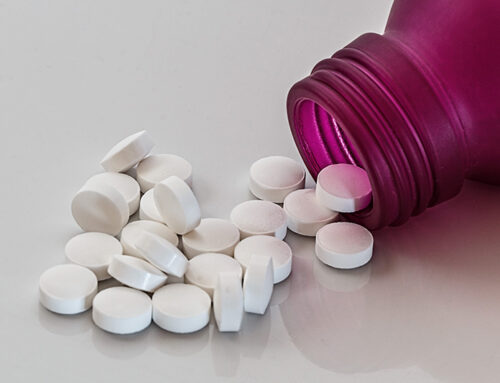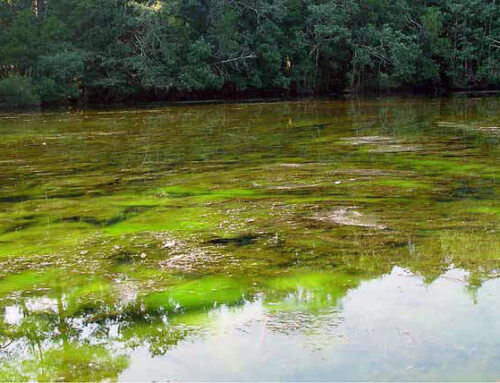According to a recent study conducted by the Chicago Metropolitan Agency for Planning (CMAP), the demand for water in northeastern Illinois could increase by 64 percent by 2050. A 2005 study commissioned by the McHenry County Board warns of water demand exceeding supply in Algonquin and Grafton Townships by 2030, with potential for the same in Burton, Dorr and Nunda Townships.
“Some parts of the county [Algonquin and Grafton Townships] could face shortages as early as 2020. That’s next decade,” -Cassandra McKinney, county Water Resources Manager, said in a Northwest Herald article.
“Conservation is the key. The message for the general public is that it definitely is not too early to begin thinking about conserving water, and that applies equally to businesses and municipalities.” -Tom Garritano, CMAP
Encourage your school system and local government to help develop and promote a water conservation ethic among children and adults. Also, you can make suggestions to your employer to save water (and dollars) at work.
There are many ways to save water, and they all start with you. Try to do one thing each day to save water. Don’t worry if the savings are minimal. Every drop counts. And every person can make a difference! Below are the Water Conservation Tips, published weekly in 2009 by the Northwest Herald, and supplied by our Water Resources Protection Committee:
It takes about 70 gallons of water to produce one gallon of gas. To help conserve water, carpool or use public transit and walk or bike whenever possible. (Who knew that saving gas would save water?!?)
 When you’re traveling and staying in a motel multiple nights, let the staff know that you would like to reuse your towels and sheets. This will reduce the amount of water used by the motel for laundry by hundreds of gallons per week.
When you’re traveling and staying in a motel multiple nights, let the staff know that you would like to reuse your towels and sheets. This will reduce the amount of water used by the motel for laundry by hundreds of gallons per week.
In a restaurant, turn the empty water glass upside down if you don’t want water. Not only will you save the water you don’t drink, you’ll also save the water used to wash the glass. Collectively this can save million of gallons of water per year.
Covering your swimming pool will significantly help to reduce evaporation. An average-sized pool can lose about 1,000 gallons of water per month if left uncovered. Pool covers can cut water losses by up to 90% while keeping water cleaner. Periodically check for leaks. Use a grease pencil to mark the water level at the skimmer. Check the mark 24 hours later. Your pool should lose no more than 1/4 inch each day.
Don’t buy recreational toys for your kids that require a constant flow of water. As a treat for them to cool off, a sprinkler could be used in an area where your lawn needs water the most, so it will be absorbed and not run off.
 Turn off the water while you brush your teeth and save 4 gallons a minute. That’s 200 gallons of water a week saved for a family of four! Turning off the water while you lather your hands when washing them will save additional gallons.
Turn off the water while you brush your teeth and save 4 gallons a minute. That’s 200 gallons of water a week saved for a family of four! Turning off the water while you lather your hands when washing them will save additional gallons.
Teach your children to turn the faucets off tightly after each use. And if a faucet is leaking, grab a wrench and fix it. It’s simple, inexpensive, and can save 140 gallons of water a week.
 If your toilet was installed prior to 1980, place a jug filled with water in your toilet tank to cut down on the amount of water used for each flush. Be sure the jug does not interfere with operating parts. You can save upwards of 5 gallons of water a day.
If your toilet was installed prior to 1980, place a jug filled with water in your toilet tank to cut down on the amount of water used for each flush. Be sure the jug does not interfere with operating parts. You can save upwards of 5 gallons of water a day.
Check for leaks by putting a few drops of food coloring in your toilet tank. If the color seeps into the toilet bowl, you have a leak. It’s easy to fix, and you can save more than 600 gallons a month.
Got fish? When you clean your fish tank, use the water you’ve drained on your plants. (Not a good idea if yours is a salt water tank, though!) The water is rich in nitrogen and phosphorus, providing you with free and effective fertilizer. Done repeatedly over time, this small step can result in big water savings, and happy plants.
 Run your washing machine and dishwasher only when they are full and you could save 1000 gallons of water a month. If you have to wash a smaller quantity of clothes, always match the water level to the size of the load.
Run your washing machine and dishwasher only when they are full and you could save 1000 gallons of water a month. If you have to wash a smaller quantity of clothes, always match the water level to the size of the load.
Install a water softener only when necessary and program it to save water and salt by running the minimum amount of regenerations necessary to maintain water softness. And remember to turn the softener off when you’re on vacation.
When you have to replace your washing machine or dishwasher, choose models that have water saving features. As much as 20 gallons of water per load of clothes and 4 gallons/load of dishes can be saved with these new appliances.
It takes almost 2,000 gallons of water to produce a pair of jeans and 400 gallons to make a new shirt. So take care of your clothes and think carefully before buying new ones to help conserve water.
 If your shower can fill a one-gallon bucket in less than 20 seconds, then replace it with a low-flow showerhead. They’re inexpensive, easy to install, and can save your family more than 500 gallons of water a week.
If your shower can fill a one-gallon bucket in less than 20 seconds, then replace it with a low-flow showerhead. They’re inexpensive, easy to install, and can save your family more than 500 gallons of water a week.
Keep that bucket in the shower to catch water as you run it to let it warm up. Use this water to flush your toilet or water plants. This can save another 200 to 300 gallons a month.
water can be 1,000 times more expensive than tap water and requires additional water to package and transport. So drink tap water instead of bottled and reduce the drain on regional aquifers from bottled water companies. Purchase and reuse your own water bottle.
 Keep a pitcher of water to refill in the refrigerator instead of running the faucet for cold drinks, so that every drop goes down you instead of down the drain. This could save 200-300 gallons of water a month.
Keep a pitcher of water to refill in the refrigerator instead of running the faucet for cold drinks, so that every drop goes down you instead of down the drain. This could save 200-300 gallons of water a month.
Install an instant water heater on your kitchen sink so you don’t have to let the water run while it heats up. This will not only save a lot of water, but will also reduce hot water costs for your household.
 If you must wash your car, using a nozzle on your hose and turning off the water while you wash can save more than 100 gallons of water each time. Plus if you park your car on the lawn to wash it, you can water your grass at the same time!
If you must wash your car, using a nozzle on your hose and turning off the water while you wash can save more than 100 gallons of water each time. Plus if you park your car on the lawn to wash it, you can water your grass at the same time!
Check for water leaks in outdoor pipes, hoses, faucets, and couplings. These leaks can be just as wasteful as leaks indoors. Use hose washers at spigots and hose connections to eliminate leaks and check frequently to keep them drip-free.
If you are installing or replacing a walkway, patio, or driveway on your property, using porous materials will help prevent wasteful runoff.
 When washing fruits and vegetables, use a pan partially filled with water instead of running water from the tap. Then reuse the rinse water to water your potted plants. This could save 150-200 gallons of water a month!
When washing fruits and vegetables, use a pan partially filled with water instead of running water from the tap. Then reuse the rinse water to water your potted plants. This could save 150-200 gallons of water a month!
Defrost food without running water over the packages. Either plan ahead by placing frozen items in the refrigerator overnight or defrost them in the microwave. This step can save 50 to 150 gallons of water per month.
Select the proper size pans for cooking, so that you can cook your food in as little water as possible. This not only saves water, but also retains more of the nutrients.
When washing dishes by hand use the least amount of detergent possible to minimize rinse water needed. And don’t let the water run while rinsing. Instead use short bursts of water or fill one sink with rinse water. This can save 750 to 1,500 gallons per month.
When you plan for planting flowers, shrubs, and groundcovers, choose native species adapted to lower water needs. You could save upwards of 500 gallons a year by not needing to water them after they become established.
 Place 2″ to 4″ of organic material such as compost or bark mulch around plants to reduce evaporation and save hundreds of gallons of water a year. This will not only save water, but will discourage the growth of weeds.
Place 2″ to 4″ of organic material such as compost or bark mulch around plants to reduce evaporation and save hundreds of gallons of water a year. This will not only save water, but will discourage the growth of weeds.
Start a compost pile to save water in two ways. By composting peelings from fruits and vegetables you can cut down on water usage in your garbage disposal. Plus using compost when you plant adds water-holding organic matter to the soil.
Consider establishing a rain garden on your property. Channel stormwater from your roof across your lawn and into a bed of high water-use plantings in a low lying area. This will retain the water on your property and create beauty around your home, school, or office.
Place rain barrels or buckets beneath your downspouts. For every inch of rain, 1,000 sq. ft. of roof surface will collect 420 gallons of water, which can then be used for watering plants or washing your car rather than being channeled into the storm sewer.
 Plant shrubs or place attractive fencing around your vegetable garden to shelter the plants from wind and evaporative moisture loss and to prevent the soil from drying out as quickly, thus reducing the need for watering.
Plant shrubs or place attractive fencing around your vegetable garden to shelter the plants from wind and evaporative moisture loss and to prevent the soil from drying out as quickly, thus reducing the need for watering.
As you clean up your yard, leave lower branches on trees and shrubs and allow leaf litter to accumulate on top of the soil around them as well as in your flower beds. This will keep the soil cooler and lessen evaporation, thus reducing the need for watering.
Sweep dirt, grass clippings, and leaves off of driveways and sidewalks instead of using water from a hose. You can save up to 150 gallons of water each time. Plus, you’ll help keep your nearby stream cleaner by not adding dirt and other wastes to the storm sewer, which empties directly into the nearest stream without any treatment.
 Landscape irrigation accounts for almost half of residential water use. Plan to decrease that amount by watering your plants efficiently through the use of drip irrigation or soaker hoses. Make sure that drought tolerant plants get no more water than they need. You’ll not only save water but money as well!
Landscape irrigation accounts for almost half of residential water use. Plan to decrease that amount by watering your plants efficiently through the use of drip irrigation or soaker hoses. Make sure that drought tolerant plants get no more water than they need. You’ll not only save water but money as well!
Water without waste. Stop watering whenever runoff occurs, especially on slopes or on compacted soils. Allow moisture to penetrate the soil before restarting. Also, position sprinklers so that you’re not wasting water on sidewalks and other impervious surfaces. Along paved areas you can water more efficiently by using a watering can.
A single lawn sprinkler spraying five gallons per minute uses 50% more water in just one hour than a combination of ten toilet flushes, two 5-minute showers, two dishwasher loads, and a full load of clothes! Lots of water can be saved by watering your lawn only when it needs it instead of on a fixed schedule. If your lawn has received an inch of rain during a week’s time, it does not need additional watering. Adjust or deactivate automatic sprinklers during rainy periods. Such action could save from 200 to 300 gallons of water each time.
A good way to see if your lawn does need watering is to step on the grass. If it springs back up when you step on it, it doesn’t need water. If it stays flat, it is ready for watering. When you do water your lawn, do it long enough for the moisture to soak down to the roots where it will do the most good. A light sprinkling can evaporate quickly and tends to encourage shallow root growth, which requires watering more frequently. Put an empty tuna can on your lawn. When it’s full, you’ve watered enough. Also, plan to water when it’s not windy, as wind will speed evaporation.
To save water and have a greener lawn, adjust your lawn mower to a higher setting. Longer grass shades root systems and holds soil moisture better than a closely clipped lawn.
To save water as we head into a drier time of the year, prioritize your watering needs. Most lawns will simply go dormant if not watered, and the grass will recover when rainfall returns. Because a 5,000 sq. foot lawn needs up to 6,000 gallons of water per week to stay green, it is wiser to let lawns sleep through a dry period than to waste water, money, and effort.
 When the temperatures drop, winterize outdoor spigots to prevent pipes from bursting or freezing. Inside, insulate your water heater and hot water pipes so you don’t have to run as much water to get hot water to the faucet. You’ll save on your energy bill as well.
When the temperatures drop, winterize outdoor spigots to prevent pipes from bursting or freezing. Inside, insulate your water heater and hot water pipes so you don’t have to run as much water to get hot water to the faucet. You’ll save on your energy bill as well.
Have a water conservation tip you’d like to share? Email us!




